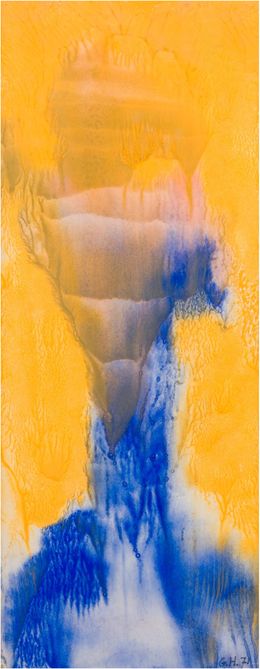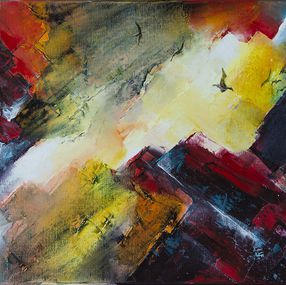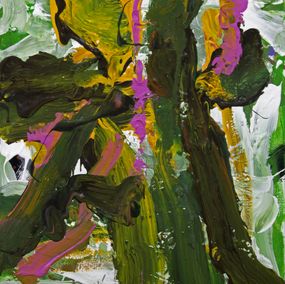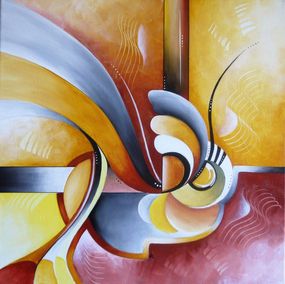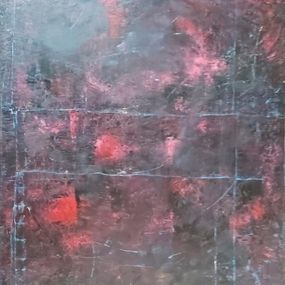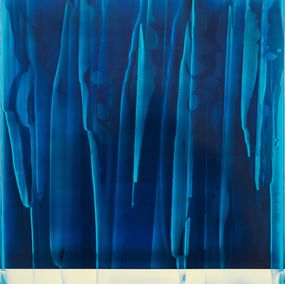
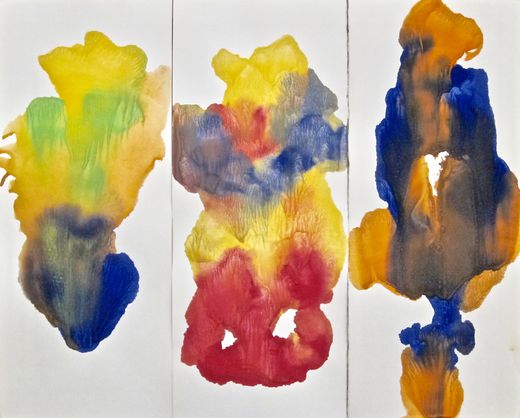
France
• 1906
Biography
Georges Hugnet was born in Paris on 11th July, 1906 and died in Saint Martin de Ré in Charente Maritine on 26th June 1974, he was a French poet, writer, playwright, graphic designer and film-maker.
After having spent his childhood in Argentina, he came back to France in 1910 and 1920 onwards, he began rubbing shoulders with artists like Tristan Tzara, Man Ray, Pablo Picasso, Joan Miró and Marcel Duchamp. He was the first historian of the Dada movement and his studies appeared 1924 onwards in major magazines like Cahiers d'art and Minotaure. They caught André Breton's attention and he joined the Dada group, officially in 1932.
He directed a short movie in 1929, La Perle, whose inspiration and surrealist affiliation were not unanimously accepted and was excluded from the movement in 1939. Therefore, he continued his artistic research alone and realized an automatic transfer printing in black ink, a technique which he perfected with Oscar Dominguez. He created photo-montages and photo-collages, newspaper cuttings and assembled all kinds of materials like stones in marine algae, recovered objects like torn paper and created dreamlike works.
He worked as a book binder for a while and designed the « Livre-Objet », unique bindings considered as rare bibliographics.
The German occupation prevented him to continue from working as an editor at Les Editions de la Montagne, he managed this literature magazine those days. Words were used due to paper rationing and therefore he joined the group La Main à plume, to fight against elaborating leaflets and manufactured fake passes in his binding studio to help people who were wanted by the Gestapo, to flee the occupied zone. He co-founded a clandestine publishing house, whose first book was Silence de la mer de Vercors. This house became Editions de Minuit after the Liberation and as Paris was liberated, Georges Hugnet was able to devote himself to his art again.
The pictorial work of Georges Hugnet is widely present in museums around the world in private collections and foundations, and is nonetheless second from his intrinsic poetry.
Read more
After having spent his childhood in Argentina, he came back to France in 1910 and 1920 onwards, he began rubbing shoulders with artists like Tristan Tzara, Man Ray, Pablo Picasso, Joan Miró and Marcel Duchamp. He was the first historian of the Dada movement and his studies appeared 1924 onwards in major magazines like Cahiers d'art and Minotaure. They caught André Breton's attention and he joined the Dada group, officially in 1932.
He directed a short movie in 1929, La Perle, whose inspiration and surrealist affiliation were not unanimously accepted and was excluded from the movement in 1939. Therefore, he continued his artistic research alone and realized an automatic transfer printing in black ink, a technique which he perfected with Oscar Dominguez. He created photo-montages and photo-collages, newspaper cuttings and assembled all kinds of materials like stones in marine algae, recovered objects like torn paper and created dreamlike works.
He worked as a book binder for a while and designed the « Livre-Objet », unique bindings considered as rare bibliographics.
The German occupation prevented him to continue from working as an editor at Les Editions de la Montagne, he managed this literature magazine those days. Words were used due to paper rationing and therefore he joined the group La Main à plume, to fight against elaborating leaflets and manufactured fake passes in his binding studio to help people who were wanted by the Gestapo, to flee the occupied zone. He co-founded a clandestine publishing house, whose first book was Silence de la mer de Vercors. This house became Editions de Minuit after the Liberation and as Paris was liberated, Georges Hugnet was able to devote himself to his art again.
The pictorial work of Georges Hugnet is widely present in museums around the world in private collections and foundations, and is nonetheless second from his intrinsic poetry.
Nationality
Categories
Themes
Discover the movements linked to Georges Hugnet
Discover similar artists
Discover our selections of works by artists
Need help finding your favorite? Consult our selection pages made for you.
Need to know more?
What are their 3 main works?
When was Georges Hugnet born?
The year of birth of the artist is: 1906





